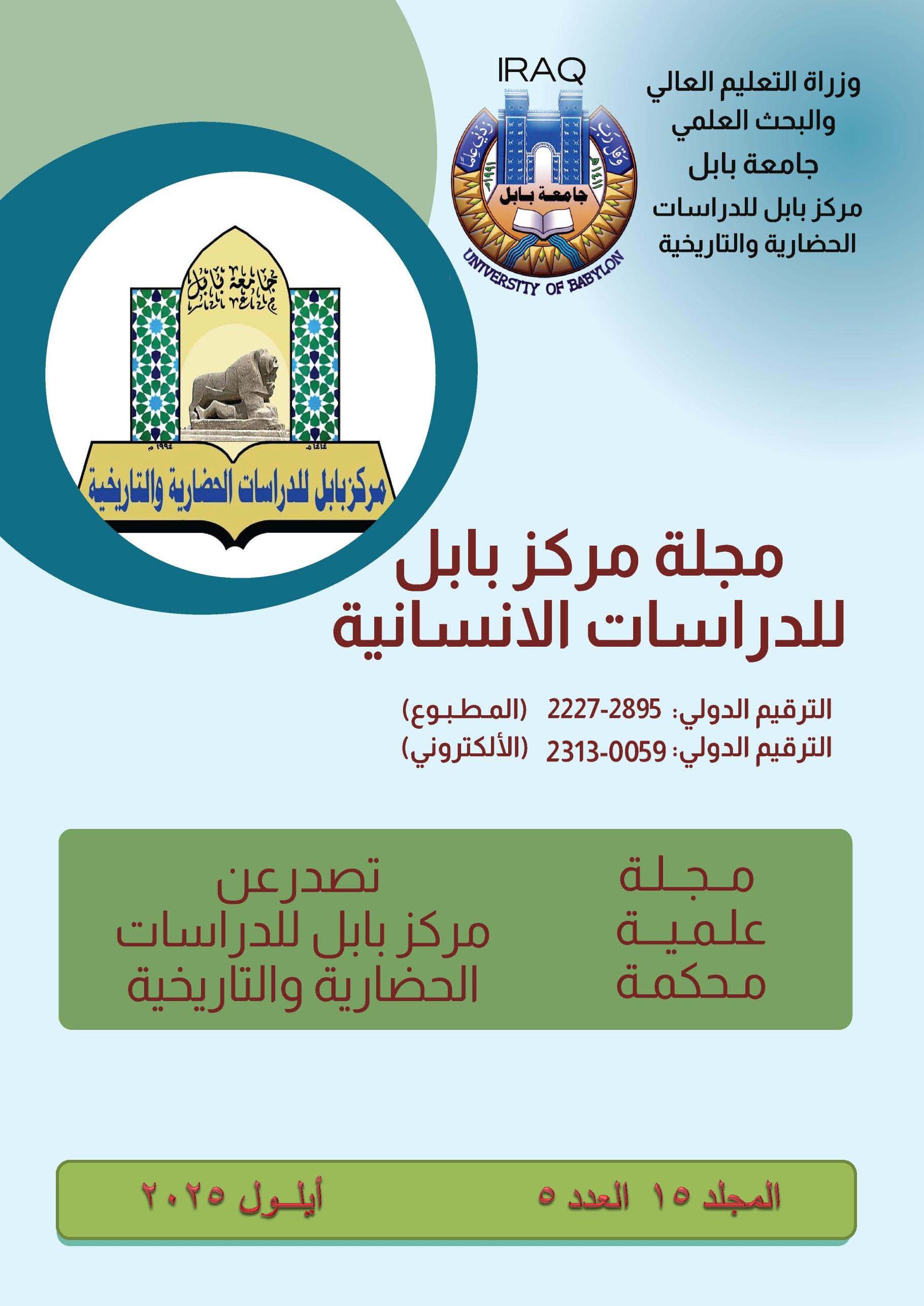Abstract
The current research aims to identify
1. The percentage of students with learning difficulties in special education classes.
2. The percentage of students with slow learning in special education classes.
3. The level of differential reinforcement methods among students with learning disabilities.
4. The level of differential reinforcement methods among slow learning students.
5. Identify the statistical significance of the differences in differential reinforcement methods for people with learning difficulties and slow learners.
To achieve the objectives of the research, the researcher used the descriptive-relational method as an approach for her research procedures, and the researcher followed the scientific steps adopted in psychological measurement to build a measure of differential reinforcement methods, which consisted of (4) fields and (26) paragraphs, and after extracting the psychometric characteristics of it from sincerity and stability, it was applied The scale is based on the main research sample, and the results of the research showed the following:
1. It was found that the number of students with learning difficulties reached 147
2. It was found that the number of slow learners reached 198
3. The students with learning difficulties do not have differential reinforcement methods
4. The slow learners enjoy differential reinforcement methods
5. The slow learners enjoy differential reinforcement methods more than those with learning disabilities.
1. The percentage of students with learning difficulties in special education classes.
2. The percentage of students with slow learning in special education classes.
3. The level of differential reinforcement methods among students with learning disabilities.
4. The level of differential reinforcement methods among slow learning students.
5. Identify the statistical significance of the differences in differential reinforcement methods for people with learning difficulties and slow learners.
To achieve the objectives of the research, the researcher used the descriptive-relational method as an approach for her research procedures, and the researcher followed the scientific steps adopted in psychological measurement to build a measure of differential reinforcement methods, which consisted of (4) fields and (26) paragraphs, and after extracting the psychometric characteristics of it from sincerity and stability, it was applied The scale is based on the main research sample, and the results of the research showed the following:
1. It was found that the number of students with learning difficulties reached 147
2. It was found that the number of slow learners reached 198
3. The students with learning difficulties do not have differential reinforcement methods
4. The slow learners enjoy differential reinforcement methods
5. The slow learners enjoy differential reinforcement methods more than those with learning disabilities.
Keywords
differentiation
learning difficulties
Reinforcement
slow learning
Abstract
يستهدف البحث الحالي التعرف على
1.نسبة التلامذة ذوي صعوبات التعلم في صفوف التربية الخاصة .
2.نسبة التلامذة ذوي بطيء التعلم في صفوف التربية الخاصة .
3.مستوى اساليب التعزيز التفاضلي لدى التلامذة ذوي صعوبات التعلم .
4.مستوى اساليب التعزيز التفاضلي لدى التلامذة بطيء التعلم .
5.التعرف على الدلالة الاحصائية للفروق في اساليب التعزيز التفاضلي لذوي صعوبات التعلم وبطيء التعلم .
ولتحقيق اهداف البحث استعملت الباحثة المنهج الوصفي الارتباطي منهجا لإجراءات بحثها ,واتبعت الباحثة الخطوات العلمية المعتمدة في القياس النفسي لبناء مقياس اساليب التعزيز التفاضلي ,الذي تكون من (4)مجالات و(26)فقرة, ,وبعد استخراج الخصائص السايكومترية له من صدق وثبات تم تطبيق المقياس على عينة البحث الاساسية ,واظهرت نتائج البحث ما يأتي:
1.تبين ان عدد التلامذة ذوي صعوبات التعلم بلغ 147
2.تبين ان عدد التلامذة بطيء التعلم قد بلغ 198
3.ان التلامذة من ذوي صعوبات التعلم لا يوجد لديهم اساليب تعزيز تفاضلي
4.ان التلامذة بطيء التعلم يتمتعون بأساليب التعزيز التفاضلي
5.ان التلامذة بطيء التعلم يتمتعون بأساليب التعزيز التفاضلي بشكل اكبر من ذوي صعوبات التعلم.
1.نسبة التلامذة ذوي صعوبات التعلم في صفوف التربية الخاصة .
2.نسبة التلامذة ذوي بطيء التعلم في صفوف التربية الخاصة .
3.مستوى اساليب التعزيز التفاضلي لدى التلامذة ذوي صعوبات التعلم .
4.مستوى اساليب التعزيز التفاضلي لدى التلامذة بطيء التعلم .
5.التعرف على الدلالة الاحصائية للفروق في اساليب التعزيز التفاضلي لذوي صعوبات التعلم وبطيء التعلم .
ولتحقيق اهداف البحث استعملت الباحثة المنهج الوصفي الارتباطي منهجا لإجراءات بحثها ,واتبعت الباحثة الخطوات العلمية المعتمدة في القياس النفسي لبناء مقياس اساليب التعزيز التفاضلي ,الذي تكون من (4)مجالات و(26)فقرة, ,وبعد استخراج الخصائص السايكومترية له من صدق وثبات تم تطبيق المقياس على عينة البحث الاساسية ,واظهرت نتائج البحث ما يأتي:
1.تبين ان عدد التلامذة ذوي صعوبات التعلم بلغ 147
2.تبين ان عدد التلامذة بطيء التعلم قد بلغ 198
3.ان التلامذة من ذوي صعوبات التعلم لا يوجد لديهم اساليب تعزيز تفاضلي
4.ان التلامذة بطيء التعلم يتمتعون بأساليب التعزيز التفاضلي
5.ان التلامذة بطيء التعلم يتمتعون بأساليب التعزيز التفاضلي بشكل اكبر من ذوي صعوبات التعلم.
Keywords
التعزيز
بطء تعلم
تفاضل
تميز
صعوبات تعلم
